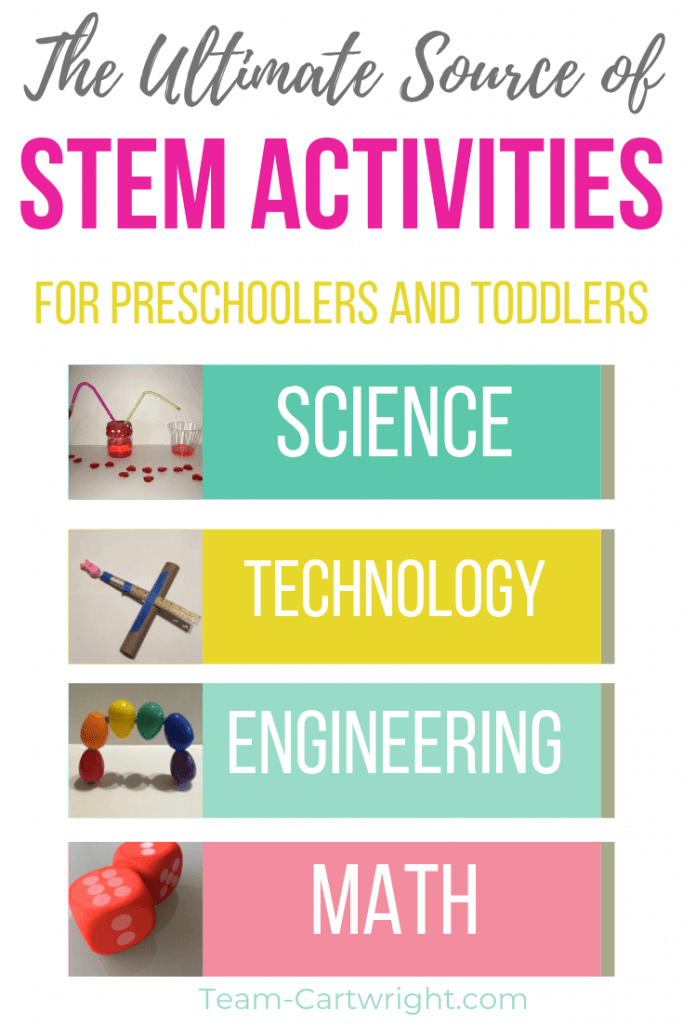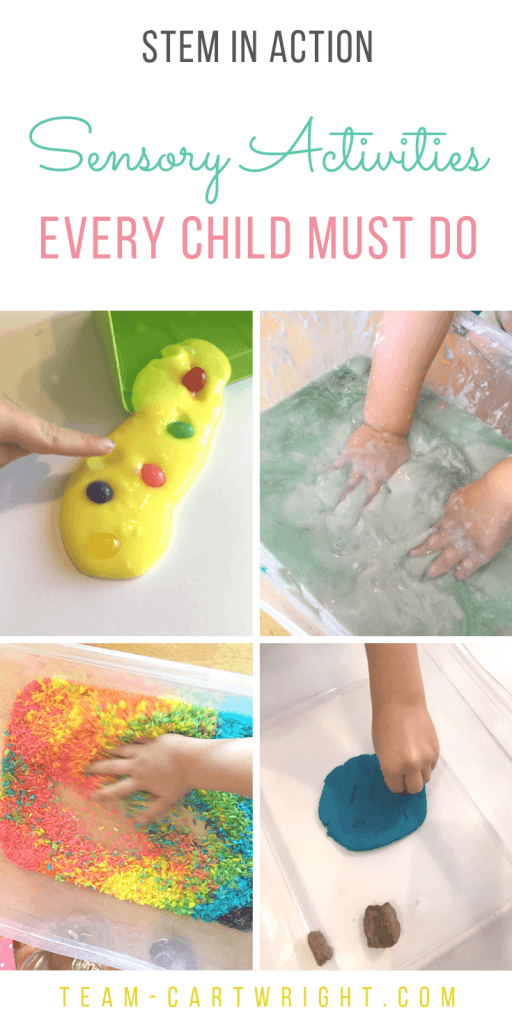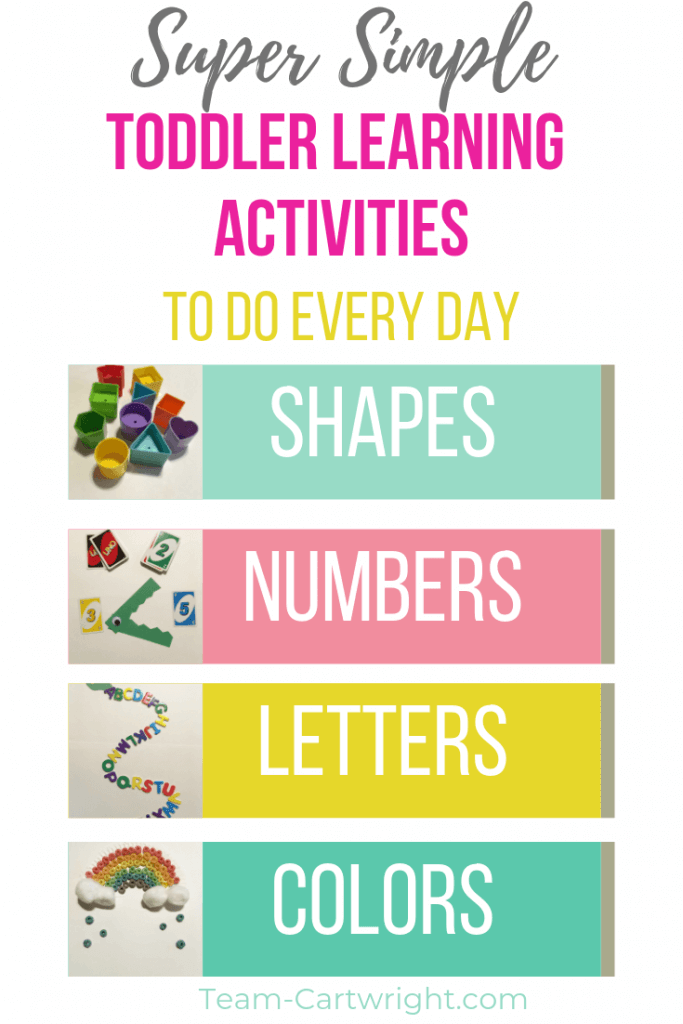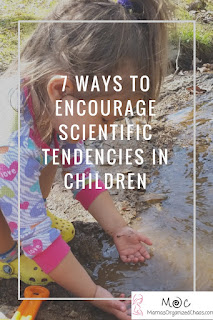Why? Why? Why? Why?
This question probably sounds familiar if you have a young child! While it probably gets annoying at times to answer question after question, it is an amazing quality that children exhibit- curiosity!
From birth, our babies are little scientists as they figure out how the world around them works. They may not know the word gravity yet, or what it means, but they test it’s presence every day as they drop items on the floor, and even test jumping off of things themselves.
Our babies don’t know what adhesion, cohesion, and surface tension mean, but they certainly test the capabilities and properties of water as much as they can. They learn and they absorb so much knowledge through open play that allows them to explore their natural curiosities.
What's In This Post?
Why is the basic question of science, and our children are natural born scientists!
Our children form hypotheses and test them without even knowing it! Our children are little observers, just as the best scientists are. I think it is so important to celebrate these natural tendencies and encourage them to embrace these qualities.
As parents, this can be unknown territory, especially if you were not a fan of science. But, the reality, is that it is so easy to help our children embrace their natural scientific tendencies, and I bet you love science more than you realize (just maybe not that high school chemistry class) LOL!
As a scientist myself, I find it fascinating to watch as my toddler shows exceptional scientific qualities. I bet your little one exhibits these qualities, too! When I think about what it takes to be a good scientist, I come up with a handful of qualities. Does your toddler exhibit any of these?
– Notices details
– Enjoys making observations
– Is curious about the world around them and how things work
– Enjoys exploring
– Likes to be challenged
– Appreciates nature and loves being outside
– Attempts to solve problems
There are more qualities, of course, like being patient and determined and organized, but those things are for the adult scientists, and come with age.
I bet your child, if given the chance to show these qualities and behaviors, would exhibit at least 6 out of the 7 qualities mentioned, if not 7 of 7! The key, however, is allowing them to keep these natural tendencies of theirs, by encouraging the above behaviors. You don’t have to love chemistry to help your child keep their scientific skills alive and thriving!
How To Encourage Toddlers To Embrace STEM
Here are 7 basic ways you can help your child embrace their natural scientific tendencies (without getting all pinteresty with science experiments):
1. Go outside and enjoy nature.
Yes, you can go to the playground, but on the way there, take a walk and explore. Sit in the grass and watch the birds. Pick up rocks and sticks. Sit on the sidewalk and watch the ants crawling. Encourage free time outside that is exploration based.
2. Let your child get dirty.
Allow them to interact with nature in an uninhibited way. Yes, supervise to make sure your 1.5-year-old isn’t eating rocks, but allow them the freedom to play in the mud and squash it between their fingers. Get your raincoats on and splash in the puddles.
Children are learning so much when they have the freedom to get dirty! They might just find a worm, or a frog and start making observations! You never know what knowledge a little dirt will impart on your child!
3. Allow your child the freedom to solve their own problems.
Try not to step in any time your child hits a roadblock. You can give suggestions and offer things to think about and to try, but don’t just step in and solve the problem for them all the time.
Let your child struggle a bit. The struggle of solving a problem can lead to amazing learning experiences, and your child will grow up knowing they are capable of figuring things out.
I think this step is extra important in today’s cell phone age where we have information at our hands in a moments notice. We need to start young and teach our children that they can’t always look everything up. Sometimes they need to solve a problem on their own.
4. Encourage them to find answers to their questions.
This ties right into the above idea of allowing our children to solve their own problems. When they ask us a question, it is easy to always answer it. Sometimes it’s ok to ask them what they think the answer is, though! It is even better to give them a way to find the answer to their questions on their own.
Help them break down the question by asking them questions that lead to the answer. For example, when my daughter asks “What is that noise?”, I start by asking her what she thinks it is. If she doesn’t know and says “Help please”, I start asking her questions. I ask if it is inside or outside?
Sometimes, after answering, this question is enough to get her to venture a guess, and most of the time she knows the answer! If she doesn’t venture a guess, I “guess” and ask her to tell me if I’m right. Is it a bird? Is it a plane? At 2 she can often answer what it is right off the bat, and if not, she eliminates items with me as we determine what it is together.
5. Make observations and ask questions.
As a parent, it is important to model this behavior yourself. Talk with your child as you go about your daily life. Ask questions about the world, and make lots of observations. Try to be detailed. Make note of the big green frog, and talk about it! Talk about the spots on its back, and the sound it makes. So much more comes from that, as opposed to just saying “oh a frog” and being done with your observation. Note the details!
6. Provide independent play.
Nothing fuels problem solving, exploration, and observations more than independent play. When you aren’t right by your child’s side, they are much more likely to attempt to solve their own problem, try things in different ways, look at things in a new light.
It is not uncommon for children to default to their parents when they are around. They know that mom will come solve everything, so they don’t bother to attempt. Pretend you are busy, or even better, establish a routine of independent play! Your child’s ability to solve problems will sky rocket!
7. Allow creativity.
Scientists think outside of the box. That’s how problems get solved. But we need creative solutions in order to solve the creative problems of the world. So, while you teach your child to color in the lines, also show them that they can color outside the lines and even add their own drawings. Let them do things their way. Often times, you’ll learn a little something from your child, and learning from our children is one of the many gifts they’ll give us as parents!
Other Posts of Interest:
Let Your Toddler Get Dirty






